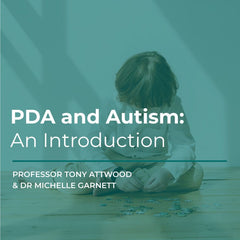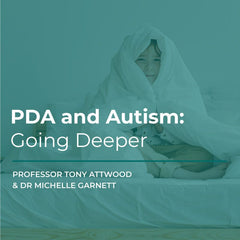Pathological Demand Avoidance and Anxiety in Autistic Adults

Pathological Demand Avoidance (PDA) and anxiety are two interconnected yet distinct constructs that have gained significant attention in the context of autism. PDA is characterised by extreme avoidance of everyday demands, often driven by anxiety, and the lived experience of Autistic adults with a PDA profile has received little research attention. In this article, we explore the relationship between anxiety and PDA in autistic adults, examining their prevalence, underlying mechanisms, and implications for diagnosis and intervention, based on the most recent research.
Anxiety in Autistic Adults
Anxiety is prevalent in autistic adults, with studies indicating that approximately 20% of autistic adults experience anxiety disorders, compared to 8.7% in the general population (Nimmo-Smith et al., 2020), and 86% of autistic adults have daily problems with their experience of anxiety (Attwood, Evans and Lesko, 2014). The most common anxiety disorders among autistic adults include obsessive-compulsive disorder and phobic anxiety disorders (Nimmo-Smith et al., 2020). Anxiety in autistic adults is often linked to specific triggers such as sensory sensitivities, difficulties with social interactions, and challenges in coping with change (Gillott & Standen, 2007).
Role of Sensory Processing
Sensory processing differences play a significant role in anxiety among autistic adults. Research suggests that sensory sensitivities can directly contribute to anxiety, as individuals may find specific sensory experiences overwhelming (Gaigg et al., 2023). This is particularly relevant in autistic adults, where sensory processing differences are more pronounced compared to non-autistic individuals (Mazurek et al., 2024).
Worry and Intolerance of Uncertainty
Worry and intolerance of uncertainty are also critical factors in anxiety among autistic adults. Studies have shown that autistic adults experience higher levels of worry compared to non-autistic adults, often manifesting as a cycle of negative thoughts that impact daily life (Black & Clarke, 2023). Intolerance of uncertainty, or the difficulty in coping with uncertain situations, further exacerbates anxiety (Gaigg et al., 2023).
Pathological Demand Avoidance (PDA) in Autistic Adults
PDA is a behavioural profile often associated with autism, characterised by extreme avoidance of everyday demands. This avoidance is typically driven by anxiety, with individuals employing various strategies to avoid compliance with demands (O’Nions et al., 2014; Hoster, 2022).
Observable Profile
The observable profile of PDA is characterised by extreme resistance to demands, including using social strategies, such as giving compliments and offering to help (O’Nions et al., 2014). Using social strategies to avoid complying differentiates the PDA profile from the typical autistic profile of demand avoidance (Newson et al, 2003). PDA behaviours have been distinguished from demand avoidance observed in conduct problems and people with callous-unemotional traits, by reward-based techniques, which are often effective in the latter, not being effective for people with a PDA profile (O’Nions et al., 2014). In addition, the PDAer will avoid activities they typically enjoy if these are perceived as demands.
Emotional Symptoms
Emotional symptoms in people with a PDA profile are particularly pronounced, with higher levels of emotional distress experienced compared to those who are autistic or have conduct problems (O’Nions et al., 2014). Adults with PDA experience significant anxiety and social dislocation, which can lead to isolation and difficulty accessing services (Kenny & Doyle, 2024).
Understanding the reasons behind the observable behaviour, in addition to the extreme emotional symptoms of PDA, allows specific interventions tailored to address the underlying anxiety driving the behaviours and the distress.
Comparative Analysis of Anxiety and PDA in Autistic Adults versus Other Populations
Anxiety in Autistic Adults versus Non-Autistic Adults
Anxiety in autistic adults differs from that in non-autistic adults in several key aspects. First, the triggers for anxiety are often more specific in autistic adults, with sensory sensitivities and difficulties with social interactions playing a more central role (Gaigg et al., 2023; Gillott & Standen, 2007). Second, the manifestation of anxiety may differ, with autistic adults often exhibiting more intense emotional reactivity and behavioural avoidance (Gillott & Standen, 2007).
PDA in Autistic Adults versus Children
While numerous studies of autistic children have explored PDA, its manifestation in adults is less studied and understood. However, research suggests that PDA behaviours persist into adulthood, with some adults continuing to exhibit extreme demand avoidance driven by anxiety (Johnson & Saunderson, 2023; Kenny & Doyle, 2024; White et al, 2022). The strategies employed by adults to avoid demands tend to become more sophisticated, but the underlying anxiety remains a driving force (Johnson & Saunderson, 2023).
PDA in Autistic Adults versus Other Clinical Populations
PDA shares some behavioural features with other clinical populations, such as people with conduct problems and callous-unemotional traits, but it is distinct in its underlying mechanisms. While conduct problems are often associated with a lack of concern for others, PDA is driven by anxiety, a need to avoid demands (O’Nions et al., 2014), and perceived coercive control (Gillberg et al., 2024). This distinction is crucial for accurate recognition, support, and therapy.
Diagnostic and Intervention Considerations
Diagnostic Challenges
The diagnosis of PDA in autistic adults is often challenging due to its overlap with other conditions such as autism and anxiety disorders. Some researchers suggest that PDA should be viewed as a behavioural profile rather than a distinct diagnostic entity, emphasising the need for a comprehensive assessment that considers autistic traits and anxiety (Kamp-Becker et al., 2023; Hoster, 2022).
Therapy
Therapy to reduce distress for autistic adults with a PDA profile generally focuses on addressing the underlying anxiety driving the demand avoidance. Strategies such as reducing uncertainty, providing clear structure, and offering choices can help alleviate anxiety and reduce avoidance (Johnson & Saunderson, 2023; Kenny & Doyle, 2024). Additionally, therapies that assist with emotion regulation and understanding sensory needs can be beneficial in managing anxiety in autistic adults (Zecevic, 2023; Gaigg et al., 2023). Therapy must be adapted to emphasise flexibility and greater autonomy for the client. Modifying therapy to be relationship-focused and trauma-sensitive is helpful.
Conclusion
Autistic adults with a PDA profile often experience high levels of anxiety, which drives the extreme demand avoidance characteristic of PDA. Understanding these phenomena requires a comprehensive approach that considers both the unique experiences of autistic adults and the overlap with other clinical populations. By addressing the underlying anxiety and providing tailored interventions, we can improve the quality of life for autistic adults who feel trapped by their PDA.
Where to from here?
We have created two half-day live webcasts exploring PDA in children, adolescents and adults:
PDA and Autism: An Introduction
The purpose of this training is to increase your understanding of PDA to assist you to recognise the profile your child, student or client, to increase your confidence in your role with these children and equip you with strategies to maximise positive outcomes.
We assume the knowledge presented in the first course and go deeper to explore strategies and how to best support the PDA-er and their family or partner.
References
Attwood, Evans and Lesko (Eds.) Been There. Done That. Try This. London. Jessica Kingsley Publishers.
Black, M. H., & Clarke, P. J. F. (2023). What Are You Worried About? Content and Extent of Worry in Autistic Adults. Journal of Autism and Developmental Disorders. https://doi.org/10.1007/s10803-023-05963-2
Dundon, R. (2021) PDA in the Therapy Room. JKP, London, UK.
Gillott, A., & Standen, P. (2007). Levels of anxiety and sources of stress in adults with autism. Journal of Intellectual Disabilities. https://doi.org/10.1177/1744629507083585
Gaigg, S. B., Thiel, T., Roessner, V., & Ring, M. (2023). Examining a model of anxiety in autistic adults. Autism. https://doi.org/10.1177/13623613231177777
Hoster, B. (2022).Rational (Pathological) Demand Avoidance. https://doi.org/10.4324/9781003056577-7
Johnson, M., & Saunderson, H. S. (2023). Examining the relationship between anxiety and pathological demand avoidance in adults: a mixed methods approach. Frontiers in Education. https://doi.org/10.3389/feduc.2023.1179015
Kenny, N., & Doyle, A. (2024). A phenomenological exploration of the lived experience of adults experiencing pathological demand avoidance.Neurodiversity. https://doi.org/10.1177/27546330241277075
Kamp-Becker, I., Schu, U., & Stroth, S. (2023). Pathological Demand Avoidance – aktueller Forschungsstand und kritische Diskussion.Zeitschrift Fur Kinder-Und Jugendpsychiatrie Und Psychotherapie. https://doi.org/10.1024/1422-4917/a000927
Mazurek, M. O., Pappagianopoulos, J., Brunt, S., Nevill, R. E. A., Menezes, M., Harkins, C., Sadikova, E., Smith, J. V., & Howard, M. (2024). Inner experiences, mental health, and well‐being in autistic and non‐autistic adults.Autism Research. https://doi.org/10.1002/aur.3273
Newson, E., Maréchal, K. L., & David, C. (2003). Pathological demand avoidance syndrome: a necessary distinction within the pervasive developmental disorders.Archives of Disease in Childhood. https://doi.org/10.1136/ADC.88.7.595
Nimmo-Smith, V., Heuvelman, H., Dalman, C., Dalman, C., Lundberg, M., Lundberg, M., Idring, S., Idring, S., Carpenter, P., Magnusson, C., & Rai, D. (2020). Anxiety Disorders in Adults with Autism Spectrum Disorder: A Population-Based Study.Journal of Autism and Developmental Disorders. https://doi.org/10.1007/S10803-019-04234-3
O’Nions, E., Viding, E., Greven, C. U., Ronald, A., & Happé, F. (2014). Pathological demand avoidance: Exploring the behavioural profile. Autism. https://doi.org/10.1177/1362361313481861
White, R., Livingston, L. A., Taylor, E. C., Close, S. A. D., Shah, P., & Callan, M. J. (2022). Understanding the Contributions of Trait Autism and Anxiety to Extreme Demand Avoidance in the Adult General Population. Journal of Autism and Developmental Disorders. https://doi.org/10.1007/s10803-022-05469-3
Zecevic, D. (2023).Emotion regulation in autism spectrum disorder: effects on anxiety and depression- a scoping review. https://doi.org/10.59519/mper5205


